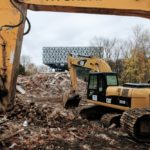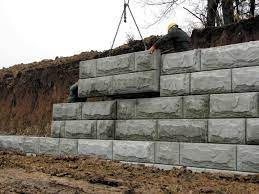Retaining walls are famous for both commercial and residential landscaping because of several reasons. Actually, they provide the opportunity for you to inject beautiful hardscaping and stonework in your area. Besides this, they protect your yard by managing rainwater flow and prevent soil erosion.
Retaining Walls Installation Darwin can install the following types of retaining walls. If you don’t know the particular retaining wall that suits your location, our experts can make the perfect decision based on their experience. Let’s look at the common types of retaining walls you can incorporate into your building
Gravity Retaining Wall
Throughout Darwin, gravity retaining wall offers users protection; the wall uses mass and sheer weight to support the soil. Because the wall is mostly about weight, it allows different variety in terms of material. Pavers, bricks, and un-mortared stone include some options available when using gravity retaining walls. Retaining Walls Installation Darwin recommends this type of wall for areas prone to erosion.
Cantilevered Retaining Wall
At times, all you need is a wall with a solid foundation that can hold the soil. The walls are designed to come with steel bars, which run through masonry or concrete retaining walls. It utilizes a retaining wall affixed to a slab foundation, which goes beneath the soil. The cantilevered retaining wall weight above the soil supports the slab such that it cannot tip forward.
Sheet Piling Retaining Wall
If your environment has space issues, then Retaining walls installation Darwin recommends using the sheet piling retaining wall. It is well suited for areas with a small space; it is a thin wall of wood, steel, or vinyl, which is driven to the soil directly. At times, they have a vertical corrugated structure to provide additional reinforcement. The sheet piling retaining wall only works in areas with softer soils.
Anchored Retaining wall
Our last on the list of retaining walls is the anchored retaining wall, which allows you to have several fronts of retaining walls supported by an anchor driven to the earth. Furthermore, the wall it is attached to strips or cables to ensure it remains strong.
These anchors are driven to the ground mechanically and expanded through injecting pressurized concrete. Retaining wall installation Darwin believes you need this type of wall if you require additional support for your wall. Interestingly, you can use it for your sheet piling, cantilevered, and gravity retaining wall.








